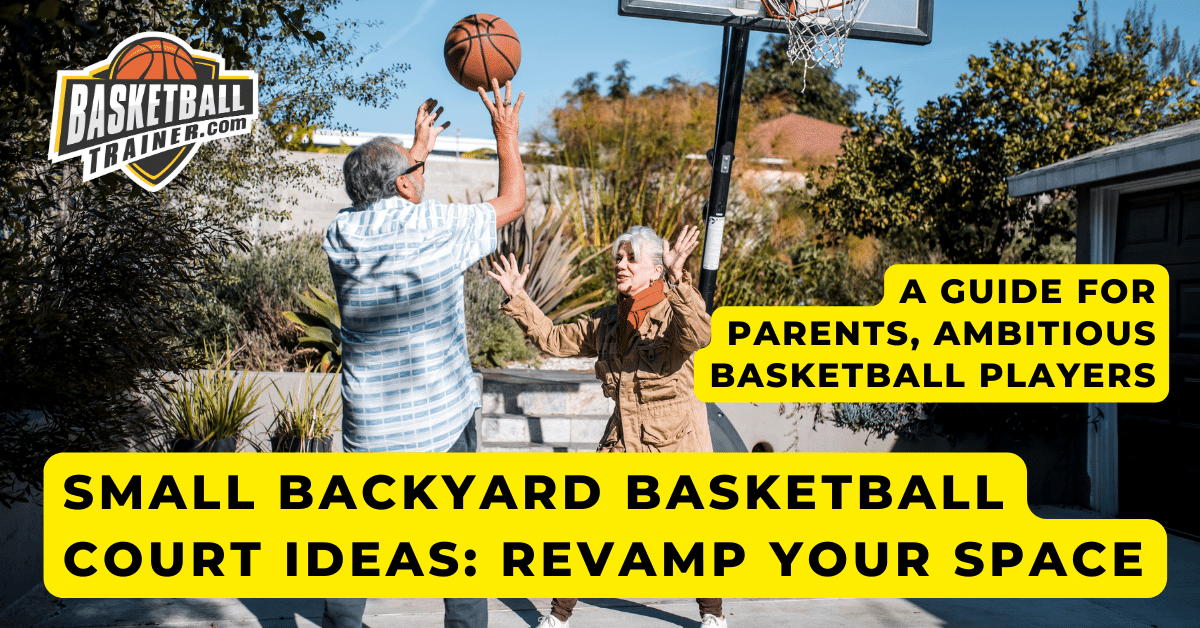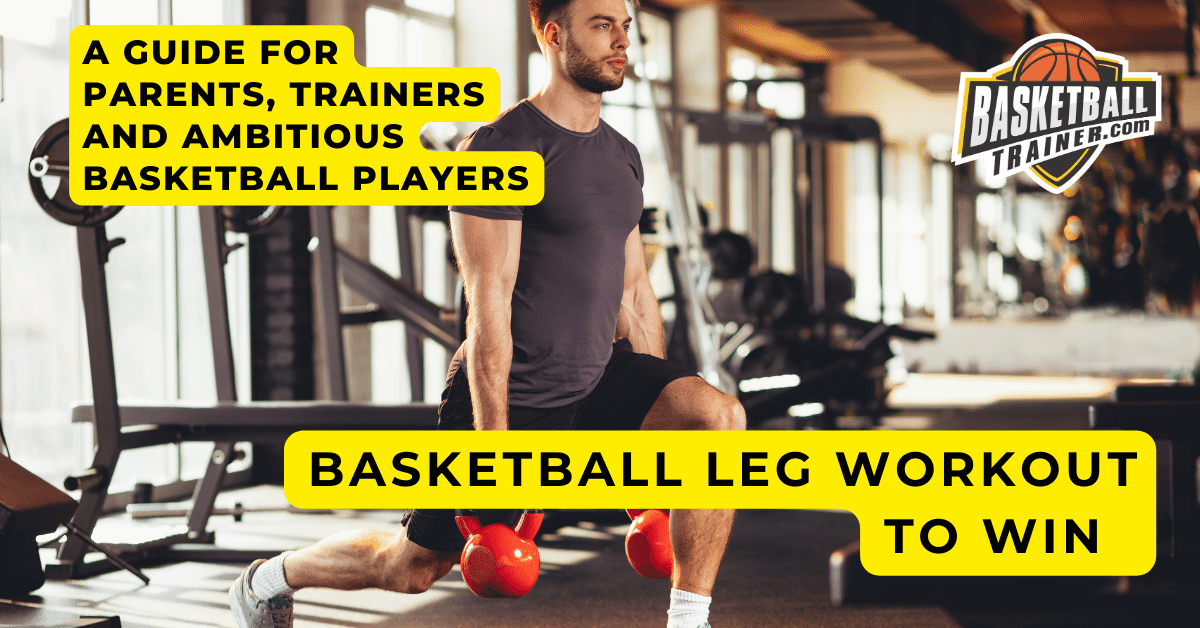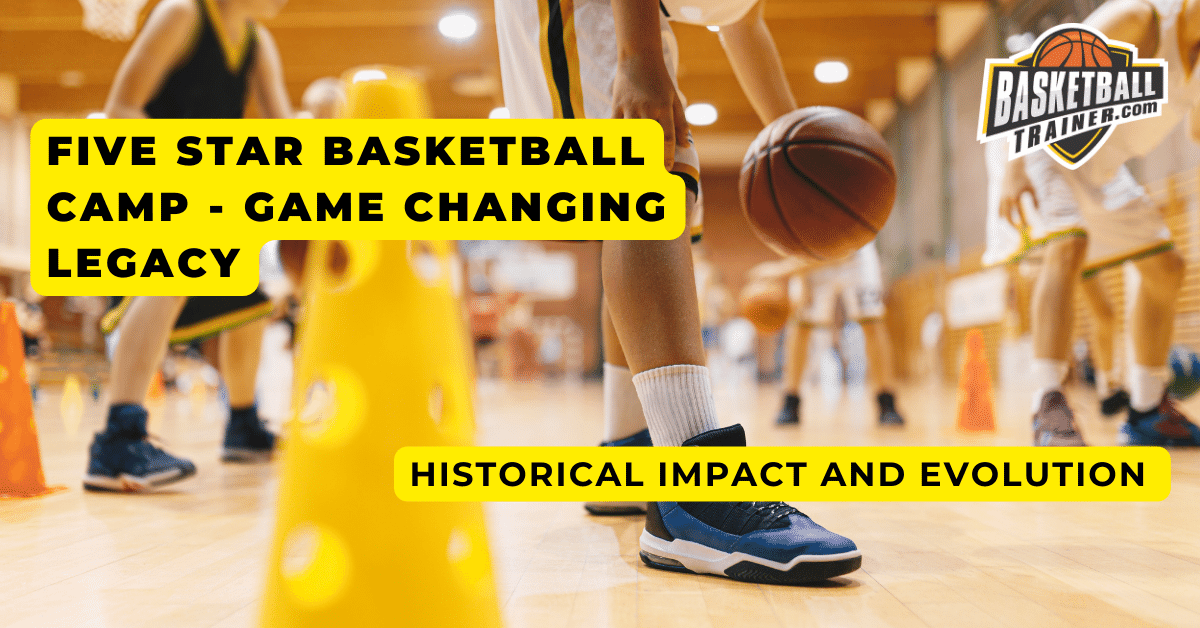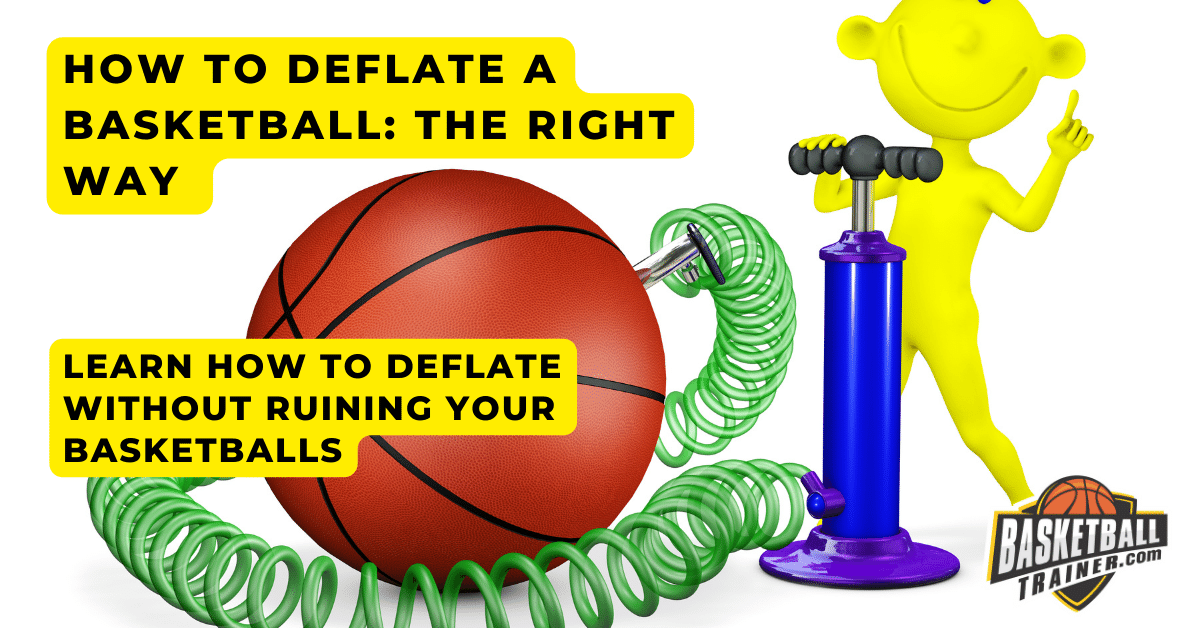
Small backyard basketball court ideas can be a game-changer for your home.
Think about it, transforming that unused space into something extraordinary…
A small backyard basketball court. It’s like having your own private sports arena right at home!
The challenge? Many homeowners are clueless on how to start designing and building one.
This is what separates the average homeowner from the savvy outdoor designer.
If you don’t know how to optimize your limited outdoor space effectively, you’ll never achieve this dream setup.
Making smart use of every square foot is not easy, folks.
Take for instance, one family who wanted their very own half-court but ended up with an impractical layout due to poor planning.
Now they’re hesitant to redesign again, fearing more wasted time and resources.
Can you blame them?
But here’s the truth…
Without proper guidance and creative small backyard basketball court ideas, they won’t ever get that perfect play area they desire.1. Introduction
The exuberance, vigor, and rivalry of basketball bring thrills to fans everywhere.
From the squeak of sneakers on polished hardwood to the swish sound as a perfectly aimed shot sails through the net – it’s no wonder this sport has captured hearts worldwide.
A court for playing basketball, be it professional or residential, is a place where athletes can demonstrate their aptitude and enthusiasm for the sport.
In recent years though, more families are exploring ways to bring this exhilarating experience closer home by setting up small backyard basketball courts.
Table of Contents:
- The Growing Popularity of Backyard Basketball Courts
- Benefits of Having a Small Backyard Basketball Court
- Key Considerations Before Building a Small Backyard Basketball Court
- Basics of Basketball Court Layout
- Design Ideas for Small Backyard Basketball Courts
- Material Selection for Small Backyard Basketball Courts
- Accessorizing Your Small Backyard Basketball Court
- Hiring Professionals vs DIY for Basketball Court Installation
- Maintenance Tips for Small Backyard Basketball Courts
- FAQs in Relation to Small Backyard Basketball Court Ideas
- Conclusion
The Growing Popularity of Backyard Basketball Courts
This trend isn’t just about ease; it’s also powered by a few other aspects that we’ll delve into deeply here at BasketballTrainer.com.
A well-optimized outdoor space can transform into not only a recreational area but also contribute positively towards health benefits associated with regular physical activity.
An Ideal Solution For The Ambitious Player
For ambitious players looking to improve their skill set without restrictions posed by public court timings or availability – having your own private practice ground could be an ideal solution.
And let’s not forget aspiring trainers who wish to start coaching from the comfort of their homes.
Benefits of Having a Small Backyard Basketball Court
If you’re an avid basketball player or simply enjoy the sport, having your own small backyard basketball court can offer numerous benefits.
Promoting Physical Activity and Fitness
A home-based court encourages regular physical activity.
Basketball is known for its cardiovascular benefits, improving endurance and promoting overall fitness.
This makes it a fun way to maintain health while enjoying time outdoors.
The Convenience Factor: Practice at Home Anytime.
Honing skills requires consistent practice which becomes much easier with access to a personal space like this.
No more driving long distances or waiting for available courts in public parks. You can play whenever inspiration strikes – early morning workouts before breakfast? Late-night shooting sessions under the stars? It’s all possible when you have your own small backyard basketball court.
Increase Your Property Value With A Sporty Touch
An outdoor sports amenity such as this not only adds aesthetic appeal but also increases property value significantly. According to real estate experts, homes that feature recreational facilities often attract potential buyers who are willing to pay premium prices especially if they share similar interests in sports activities like basketball. This could potentially result in profitable returns should one decide on selling their house down the line.
3. Key Considerations Before Building a Small Backyard Basketball Court
Before you make a start on constructing your own backyard basketball court, it is important to take some things into account.
A. Space Requirements
The first thing to assess is whether you have enough space for a small basketball court.
You need at least 25 by 45 feet for half-court play and double that size if you’re planning on installing a full-size court. Dimensions Guide offers detailed measurements which can be helpful in this stage of planning.
B. Understanding Local Zoning Laws and HOA Rules
Your local zoning laws or Homeowner’s Association (HOA) rules may also impact your plans for an outdoor sports area.
Contacting them beforehand will save potential headaches down the line; HOA-USA provides resources about specific regulations across different states.
C. Budget Considerations
Last but not least, setting up even a small backyard basketball court comes with costs associated with materials, labor, accessories like hoops and lighting fixtures etc., so it’s essential to plan out your budget ahead of time.
To get started, HomeGuide’s cost breakdown guide covers everything from basic asphalt courts all way through high-end customizable options.
Making these considerations early ensures smooth sailing during the construction process while maximizing enjoyment once the finished product becomes a reality. Next, we’ll delve deeper into specifics such as layout design – stay tuned.
4. Basics of Basketball Court Layout
Understanding the layout of a basketball court is essential when planning to build one in your backyard.
The first step involves familiarizing yourself with standard basketball court dimensions.
A. Understanding Court Dimensions
An official full-size NBA court measures 94 feet by 50 feet, but this can be scaled down for home courts depending on available space.
You might consider half-courts which typically measure about 30 feet by 50 feet or even smaller ones tailored to fit into your specific yard size.
B. Identifying Necessary Markings
Necessary markings include key areas such as the free-throw line and three-point line that define gameplay boundaries and rules.
To accurately replicate these lines, you’ll need measurements from an authentic source like.
C. Importance of Proper Court Orientation
In outdoor settings, proper orientation matters significantly due to factors like sun position during peak playing hours.
Ideally, north-south alignment helps minimize glare disruptions during play. However, local wind patterns should also be considered if applicable.
5. Design Ideas for Small Backyard Basketball Courts
If you’re planning to transform your backyard into a basketball haven, the design is key.
The right layout can maximize your space and enhance gameplay.
A. Traditional Design
This classic setup emulates professional courts with standard markings and an asphalt or concrete surface.
B. Modern Design
Modern designs often feature modular sports tiles that offer better shock absorption than hard surfaces like concrete or asphalt.
These are also available in various colors allowing customization according to personal preferences.
Check out GreatMats’ range of modern sport court options here.
C. Miniature Designs for Limited Spaces
D: Multi-purpose Designs For Shared-use Spaces
Multipurpose layouts work best if you plan on using the area for other activities as well besides basketball such as tennis or volleyball.
For inspiration, take a look at these versatile.
The above suggestions should help spark creativity when designing your own backyard basketball paradise.
Stay tuned; up next we will delve deeper into material selection which plays an integral role in determining both performance quality & durability of our dream court.
6. Material Selection for Small Backyard Basketball Courts
Selecting the right material is crucial when planning your small backyard basketball court.
Choosing the right type of flooring for your small backyard basketball court is essential, each with its own pros and cons.
A. Types of Flooring
The three most common materials used in outdoor courts include asphalt, concrete, and modular sports tiles.
Asphalt
Asphalt, known for its durability and cost-effectiveness, is a popular choice among homeowners looking to build their dream court on a budget.
Concrete
If you’re seeking longevity above all else, Concrete might be the best option due to its resistance against wear-and-tear over time despite being more expensive than asphalt initially.
Note: Both Asphalt and Concrete require professional installation.
Please consider this before making your final decision.
Sports Tiles (Modular)
- An excellent alternative if flexibility is what you desire as they can easily be rearranged or replaced individually whenever necessary.
- This makes them an ideal solution for those who want something temporary or movable.
- You’ll also appreciate how easy it’s to install these yourself without needing any professionals’ help. Just follow instructions from Modular Sports Tile Installation Guide.
B. Comparing Benefits And Drawbacks Of Each Type Of Flooring Materials For Your Court:
- All three materials provide good ball bounce which enhances game performance but differ significantly in terms of maintenance needs, installation process, and costs involved.
- To make an informed decision about which one suits your specific requirements better, you need careful consideration by comparing pros & cons associated with each type carefully.
C. Considerations About Climate And Outdoor Elements:
In addition, it’s important not forget impact weather conditions may have on chosen surface since some withstand harsh climates much better others. For instance, in areas where temperature fluctuations occur frequently, such freeze-thaw cycles might cause cracks form either concrete/asphalt courts whereas modular sport tiles remain unaffected because flexible nature.
Key Takeaway:
Key Takeaway: When selecting materials for your small backyard basketball court, consider asphalt for durability and cost-effectiveness, concrete for longevity despite higher initial costs, or modular sports tiles for flexibility and easy installation. Don’t forget to factor in climate conditions that may affect the chosen surface.
7. Accessorizing Your Small Backyard Basketball Court
A well-accessorized backyard basketball court can enhance your playing experience.
Choosing the right accessories is crucial for both functionality and aesthetics.
A. Selection of Basketball Hoops
The choice of a basketball hoop significantly impacts gameplay quality.
In-ground hoops offer stability, while portable ones provide flexibility in positioning and storage.
B. Lighting Considerations for Evening Play
Illuminating your court allows you to extend playtime into evenings or cloudy days.
C. Seating for Spectators
Add benches or chairs around the perimeter so spectators can comfortably watch games in progress.
D. Storage Solutions For Equipment
Proper storage solutions help keep your basketball equipment organized and protected.
8. Hiring Professionals vs DIY for Basketball Court Installation
If you’re considering small backyard basketball court ideas, one key decision is whether to hire professionals or embark on a do-it-yourself (DIY) project.
A. Comparing Costs and Benefits
The cost of hiring professionals might be higher upfront but offers several benefits such as expertise in sports custom backyard basketball court design and installation.
Professional installers are familiar with local zoning laws, HOA rules, and can handle the process smoothly ensuring your ultimate backyard sporting courts meet all standards.
B. Detailing the Process for DIY Installation
If you have an unused small backyard space that’s perfect for a half-court setup or even just practicing shooting hoops late into fall afternoons taking shots at goal; doing it yourself could save money while offering satisfaction from completing your own project.
Offer step-by-step instructions making this task manageable if you’re handy around home projects.
C.Tips For Finding And Working With Professionals
Finding reliable contractors requires research – look out for reviews online, check their portfolio showcasing traditional basketball court designs they’ve completed before deciding upon them.
Ask about their experience installing multi-game or classic backyard basketball courts specifically since these require specific knowledge regarding proper orientation etc., which impacts gameplay quality significantly.
Ensure they use professional sports surfacing materials suitable to withstand outdoor elements throughout seasons thus guaranteeing durability over time too.
9. Maintenance Tips for Small Backyard Basketball Courts
A well-maintained backyard basketball court not only ensures a smooth game but also prolongs the lifespan of your investment.
Regular Cleaning Recommendations
Dirt, leaves, and other debris can damage your court’s surface over time.
To prevent this, regular sweeping is recommended using a soft-bristle broom or blower to remove any loose particles without scratching the surface.
You might consider washing concrete or asphalt courts periodically with mild detergent and water.
Repairing and Resurfacing
Courts made from materials like asphalt may develop cracks due to temperature changes which need prompt attention before they worsen.
If you notice minor issues such as small cracks or uneven spots on your court’s surface, DIY repair kits are available at most home improvement stores.
In case of larger problems that require resurfacing, professional help should be sought out promptly.
Winterization and Protection From Elements
Your outdoor basketball court will face exposure to various weather conditions throughout the year; hence it needs protection against these elements.
Prioritize winterizing procedures in colder climates where snowfall could potentially cause significant damage if left unchecked. Techniques include clearing off snow regularly, applying anti-freeze solutions if necessary, covering up surfaces during heavy storms etcetera. In warmer areas too frequent sun-exposure can lead towards fading paint lines so considering UV-resistant paints would be beneficial.
FAQs in Relation to Small Backyard Basketball Court Ideas
How small can a backyard basketball court be?
A half-court setup requires at least 30 feet by 50 feet. However, for smaller spaces, consider a mini court or shooting area.
How to build a backyard basketball court?
Start with planning and measuring your space. Then prep the ground, install flooring material, paint lines and markings, and set up the hoop.
What can I use for basketball court in backyard?
You can use asphalt, concrete or modular sports tiles as flooring options. Also include necessary accessories like hoops and seating arrangements.
What are the best backyard basketball court dimensions?
The standard full-size outdoor basketball court measures 94×50 feet but you can adjust this based on available space; half-courts typically measure 47×50 feet.
Conclusion
Constructing a basketball court in your backyard is not merely a house enhancement, but an investment in healthiness, pleasure and worth of the property.
From understanding the key considerations to mastering the basics of court layout, you’ve gained valuable insights on how to bring this dream to life.
You now have design ideas for every space size and style preference. Traditional or modern? Miniature or multi-purpose? The choice is yours!
We’ve explored material options from asphalt to modular sports tiles; each with its own pros and cons depending on climate conditions.
The right accessories can elevate your playing experience while maintenance tips ensure longevity for your small backyard basketball court.
Doubtful about DIY installation? Weighed down by professional costs? You’re not alone. It’s all part of the process!
If you’re ready to take that next step towards becoming an ambitious player with their very own practice ground at home, BasketballTrainer.com is here for you! Our expert trainers are dedicated to helping players like yourself reach their full potential through effective training methods and equipment recommendations. Let us guide you in creating a small backyard basketball court that suits both your needs and budget perfectly. Start today – because every champion begins somewhere!





















